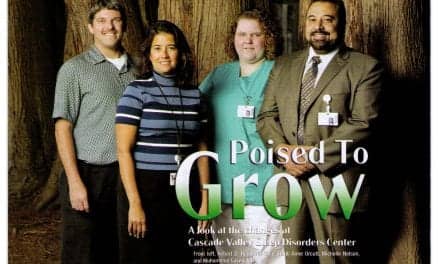The Atlanta School of Sleep Medicine and Technology sets its sights on providing high-quality continuing education for sleep technologists and physicians through on- and off-site live courses.

As sleep medicine began coming into its own as a specialty, the need for specialized training became apparent. The Atlanta School of Sleep Medicine and Technology, which offers introductory and advanced courses to polysomnographic trainees, technicians, and physicians, fills this need, according to Terrence Malloy, RPSGT, lead instructor at the school. Since its establishment over a decade ago, the school has enrolled more than 3,000 students from around the world who have traveled to Georgia to take courses. Hundreds more have attended its course offerings in other cities.
The Atlanta School of Sleep Medicine and Technology is an integral part of the not-for-profit Northside Hospital Sleep Medicine Institute. The Institute’s sleep laboratory serves as a learning place for the school’s students. The introductory program is split between hands-on learning and lectures. In addition to observing patients in the sleep laboratory, new students have the opportunity to hook up and run studies on mock subjects. A dedicated classroom with networked computers adjoins the laboratory.
The first few days of the curriculum include classes on the basics of respiratory physiology and neurophysiology related to sleep, patient safety issues, instrumentation, and recording and scoring the polysomnograph. After the initial technical aspects of polysomnography are covered, the physician students join the technicians in the course. The focus shifts to scoring sleep studies and clinical sleep medicine. Because classes are small, with a maximum of 20 students, it is easy for technicians and physicians to interact and discuss issues related to the field. The introductory course stresses the importance of the technicians’ exposure to clinical sleep disorders and the physicians’ understanding of some of the technical aspects of sleep medicine. The size and structure of classes are what makes the program stand out, says Russell Rosenberg, PhD, D,ABSM, director of the school and the Sleep Medicine Institute. “We have been told that our practical approach is very useful, and immediately applicable to our students’ work situations.” he says. Malloy adds that the students who are most successful in the introductory courses have previous experience with respiratory care, neurodiagnostics, or other medically related positions that involve patient care.
The school has always provided physician CMEs as well as continuing education credits for its courses; however, since March 2003, independent accreditation from the Accreditation Council for Continuing Medical Education now enables it to sponsor and cosponsor sleep-related programs with other organizations. The school keeps in touch with former students through flyers that promote new courses. Current information is easily accessible through its Web site (www.sleepschool.com). The school also supports professional meetings financially, administratively, and by providing speakers.
In addition to the introductory program, the school offers a number of specialty courses. Pediatric sleep medicine, business practices for sleep disorder centers, preparation for the sleep medicine board examinations, and preparation for the technology registry examination are courses currently offered at various times throughout the year. The school continues to develop other enduring educational materials as well.
Though the mission is not to provide fellowships for physicians or internships for technologists, Rosenberg expects to add additional advanced courses to the school’s menu of offerings and to continue development of educational materials. “I think everyone in this field—technologists, nurses, psychologists, dentists, administrators, and physicians—need continuing education beyond their initial training and we want to provide it in an innovative way. Our students have been telling us for years that they would like to be able to do more with us and we will respond by offering additional, unique educational opportunities.”
C.A. Wolski is associate editor for Sleep Review.



